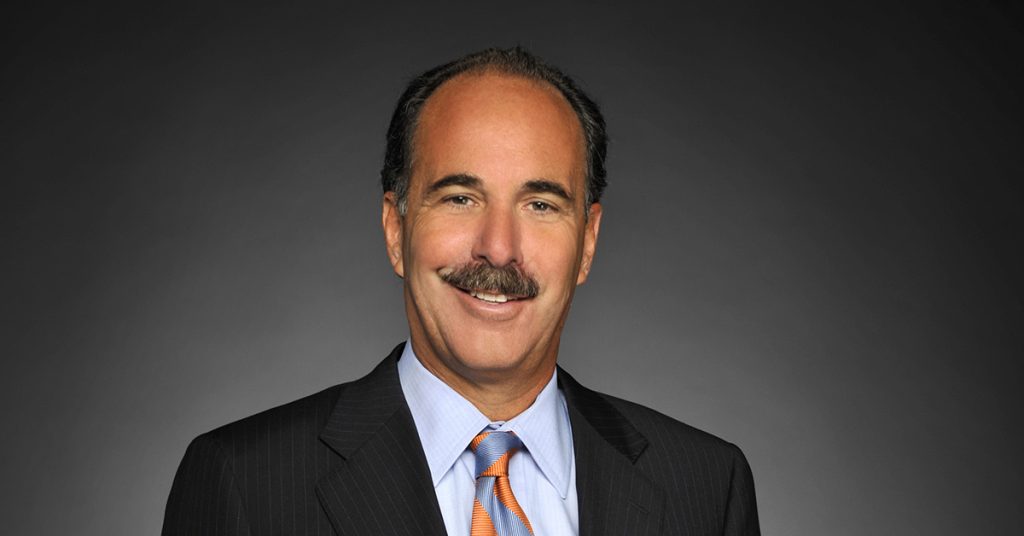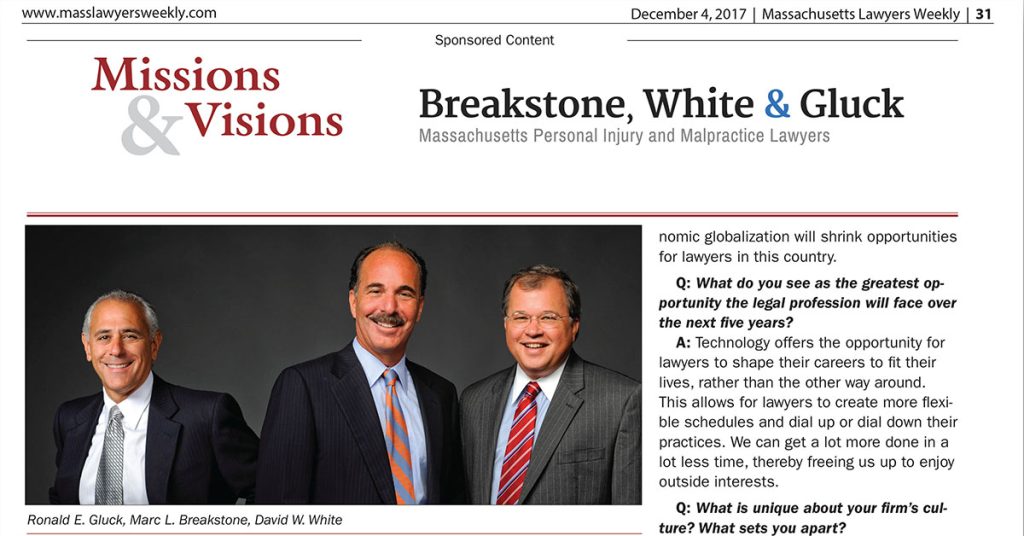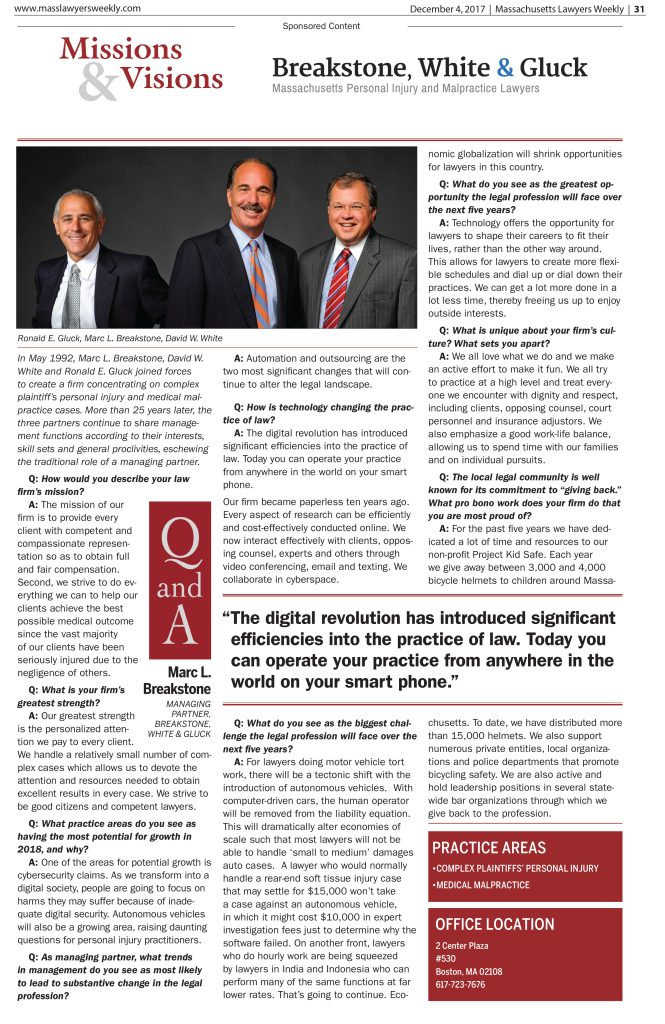Law Practice
Marc L. Breakstone Authors Article, “Establishing Liability Through the Defendant,” in MATA Journal
By Marc L. Breakstone
As published in the November 2019 edition of MATA Journal, a publication of the Massachusetts Academy of Trial Attorneys.
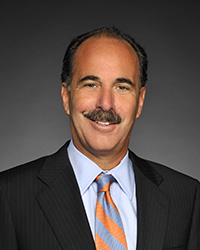
Marc L. Breakstone
There is no better way to prove liability in a negligence lawsuit than through the defendant’s own admissions. The groundwork starts with your interrogatories, which inquire about the facts surrounding the occurrence.
The best opportunity to obtain admissions comes at the deposition of the defendant or its 30(b)(6) designee. With a corporate defendant, your first deponent should be the person most knowledgeable regarding the safety practices and procedures of the defendant.
Early in the deposition ask: “Is safety is your highest priority?” If the answer is “yes,” great. If the answer is “no,” even better (find out what is!).
Human nature is such that every defendant will present themselves as extremely safety conscious. You should hand them enough rope to tie themselves as highly up the safety pole as possible.
Next ask defendant (or its designee), “What are the precautions that should be taken in the context of the occurrence in your case?” Depending on the type of case, ask specifically what it means to drive defensively, to maintain a restaurant floor in a safe condition, to safeguard floor openings at a construction site, to guard pinch points on a machine, or to enter the abdomen with a laparoscopic trocar so as to avoid injury to other structures.
Come into the deposition with your own list of precautions to be followed under the circumstances, so when the defendant runs out of ideas, you can coax additional admissions.
For example, in a car crash case, ask the defendant what it means to drive defensively. Does defensive driving mean paying attention to the roadway at all times, seeing what can be seen, following at a safe distance, anticipating the actions of other, driving at a safe speed under the conditions? Ask the defendant if she follows these rules at all times.
Your objective should be to elicit a list of precautions that a safety conscious party must follow when performing the function involved in your case. Make sure your list addresses every negligent act or omission by defendant.
Once you have your safety checklist, ask the defendant specifically what she did in this case. Drill down to get as many specific factual admissions as you can. Don’t bother asking the defendant to self-judge whether she met her own safety standards. That is for the jury at trial. What you will find is that the defendant’s conduct did not measure up to the high safety standards that she proudly admitted adherence to at the start of the deposition.
If properly done, your deposition may relieve you of the need for an expert witness at trial to testify regarding defendant’s breach of their safety responsibilities.
The MATA Journal is published as a supplement to Massachusetts Lawyers Weekly.
Marc L. Breakstone is a principal of Breakstone, White & Gluck, P.C. in Boston, where he concentrates in representing plaintiffs in serious personal injury and medical malpractice cases.
Breakstone, White & Gluck Featured in Massachusetts Lawyers Weekly
Rant On: Who’s Been Stealing Our Web Content Lately?
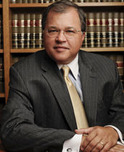 Have you ever checked to see who might be “borrowing” the copyrighted material on your web pages or blogs? Well it is easy to do, and some of the results may really disappoint you.
Have you ever checked to see who might be “borrowing” the copyrighted material on your web pages or blogs? Well it is easy to do, and some of the results may really disappoint you.
Read More


